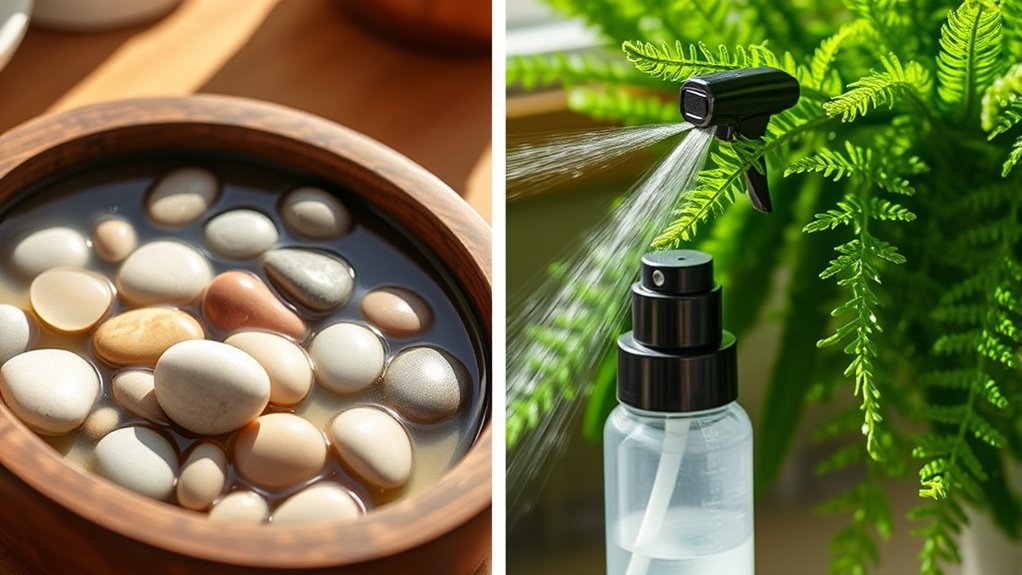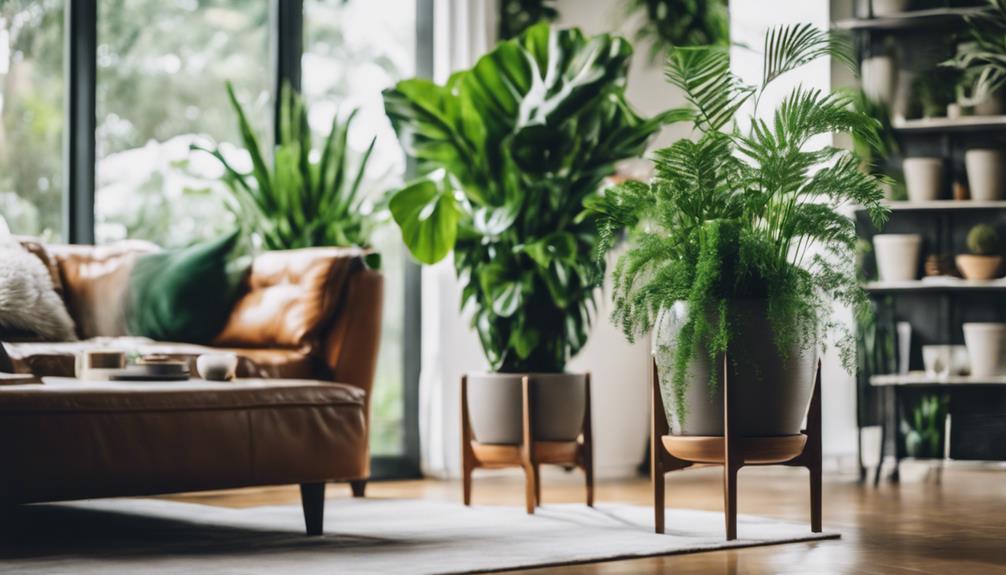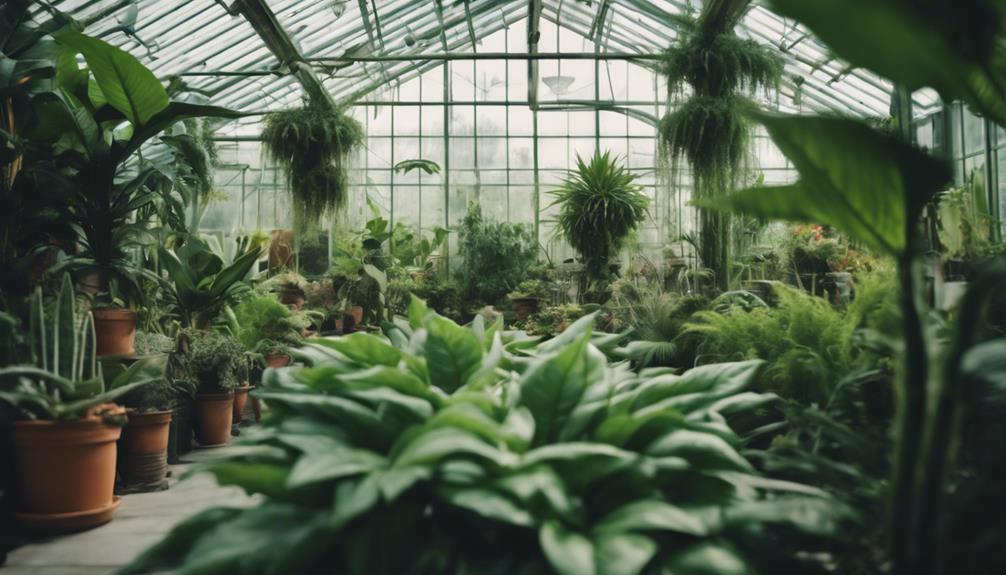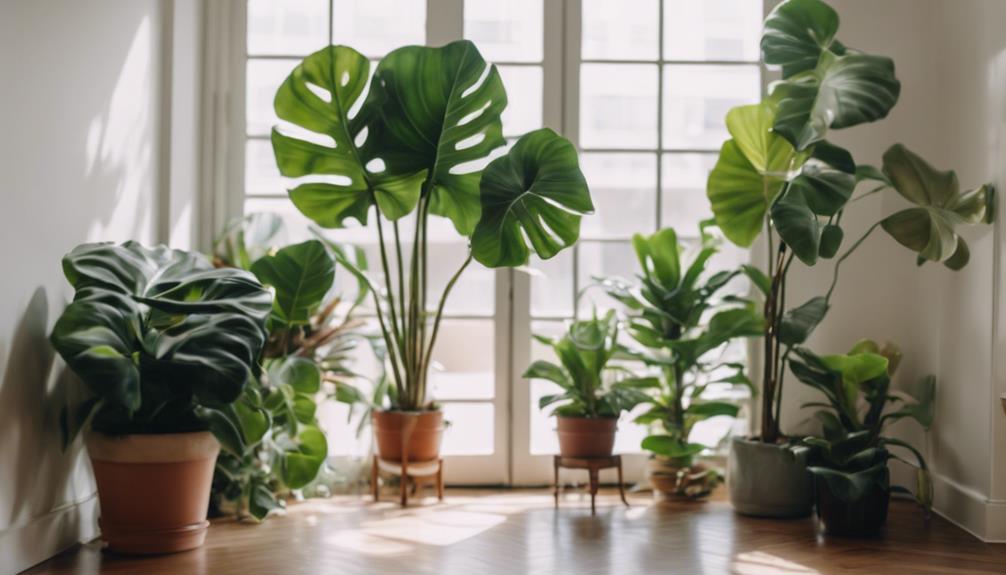To boost indoor humidity, pebble trays offer a steady, low-maintenance option as water evaporates slowly, creating consistent moisture around your plants. Misting provides a quick, short-term humidity spike by directly spraying water on leaves, but it needs frequent application. For the best results, combine both methods based on your plants’ needs and your environment. Keep exploring these humidifying hacks to find what works best for your indoor oasis.
Key Takeaways
- Pebble trays provide a steady, long-term humidity boost through slow evaporation, while misting offers quick, short-term moisture increases.
- Misting is ideal for immediate humidity needs but requires frequent reapplication, whereas pebble trays need minimal maintenance.
- Proper placement is crucial; keep plants near pebble trays without direct contact and avoid water pooling on soil when misting.
- Combining both methods can optimize indoor humidity, supporting diverse plant needs and environmental conditions.
- Pebble trays prevent water contact with pots, reducing risks like mold or root rot, while misting enhances leaf and stem moisture instantly.
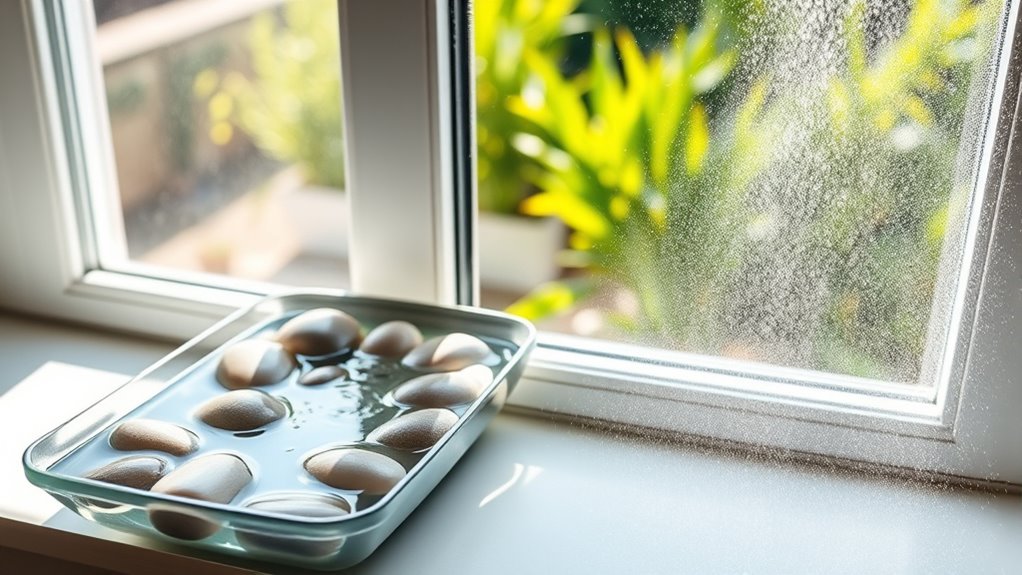
Managing indoor humidity levels can make a big difference in your comfort and home environment. Whether you’re trying to keep your space cozy or protect your houseplants, controlling moisture is key. Two popular methods—pebble trays and misting—offer simple ways to increase humidity, but they work differently and suit different situations. Understanding how these methods influence soil moisture and plant placement can help you choose the best option for your needs.
Pebble trays are a straightforward, low-maintenance solution. You place a tray filled with pebbles and water beneath your indoor plants, ensuring the water doesn’t touch the plant pots directly. As the water evaporates from the pebbles’ surface, it raises the local humidity around your plants. This gradual process helps maintain a consistent moisture level, which is especially beneficial if your home’s air tends to be dry. When you’re setting up your plant placement, consider positioning plants near the pebble tray but not directly on it, to prevent water from sitting against the pots and potentially causing root issues. The soil moisture in your plants will benefit from the slightly increased humidity, but the effect is gentle and steady. Regularly topping off the water in the tray ensures continuous evaporation, providing a reliable humidity boost without the risk of overwatering your plants. Additionally, pebble trays are effective as they create a consistent environment that promotes healthy plant growth.
Misting, on the other hand, involves spraying water directly onto the leaves and stems of your plants. This quick intervention creates an immediate spike in local humidity, which can be particularly useful for tropical plants or during dry seasons. However, the effect from misting is short-lived; the moisture evaporates rapidly, so you’ll need to repeat the process multiple times a day to sustain higher humidity levels. When misting, consider the plant’s placement—ideally in spots where excess water won’t cause problems, such as on non-porous surfaces or away from electronics. Be mindful of soil moisture; over-misting can lead to water sitting on the soil surface, increasing the risk of mold or root rot. To avoid this, only mist when necessary and ensure good air circulation around your plants. Also, avoid misting plants that dislike high humidity or have sensitive leaves, which might develop spots or rot from excess moisture.
In essence, pebble trays are best for maintaining a consistent humidity level with minimal fuss, especially for plants that thrive in steady moisture conditions. Misting offers a quick fix for immediate humidity needs but requires more frequent attention and careful placement. Combining both methods, depending on your plant types and home environment, can give you ideal control over indoor humidity, ensuring your plants stay healthy and your living space remains comfortable.
Frequently Asked Questions
Which Method Is More Cost-Effective for Long-Term Humidity Control?
When comparing long-term humidity control methods, you should consider the cost comparison and maintenance costs. Misting might seem effective initially but can lead to higher water and energy expenses over time. Pebble trays, on the other hand, require minimal maintenance and use less water, making them more cost-effective in the long run. Overall, pebble trays typically offer lower ongoing costs, making them a smarter choice for sustained humidity management.
Can Pebble Trays or Misting Harm Sensitive Plant Species?
You might think these humidity tricks are harmless, but they can actually harm sensitive plants. Pebble trays rarely cause water damage, but misting can sometimes lead to overwatering or mold, risking plant sensitivity. Ironically, what’s meant to help can hurt. So, if you’re cautious, use these methods carefully—monitor moisture levels closely—to prevent water damage and keep your delicate plants thriving.
How Often Should I Refill Water in Pebble Trays?
You should refill water in pebble trays regularly to maintain proper humidity. Check your tray at least every couple of days, especially during hot or dry weather, and top it off as needed. This guarantees consistent moisture for your plants without overwatering. Incorporate tray maintenance into your watering schedule to prevent mold and algae. Staying attentive helps keep your plants healthy and happy, providing the right humidity levels they crave.
Are There Environmental Concerns With Misting Techniques?
Imagine a gentle mist settling on your plants, invigorating them like morning dew. Misting can boost humidity, but it also raises eco impact concerns. If you mist excessively, you waste water and contribute to environmental strain. To minimize water waste, use misting sparingly and optimize your watering schedule. Being mindful helps protect our planet while keeping your plants happy, ensuring your actions are environmentally friendly and sustainable.
How Do Humidity Hacks Differ for Indoor Versus Outdoor Plants?
When caring for indoor versus outdoor plants, your humidity hacks should differ based on their environment. For indoor plants, focus on maintaining soil moisture without overwatering, and consider using pebble trays to boost humidity without affecting light requirements. Outdoors, natural humidity usually suffices, so avoid excessive misting that can promote mold. Adjust your approach to confirm each plant’s soil moisture stays balanced and their light needs are met, promoting healthy growth.
Conclusion
Whether you choose pebble trays or misting, both methods boost humidity, both keep your plants healthy, both fit your lifestyle. Try one, then the other, or even both — adapt your approach as you learn what works best. Stay consistent, stay attentive, stay motivated. With these humidity hacks, you’ll create a thriving environment, a lush oasis, and a happy collection of plants. Keep experimenting, keep caring, and watch your greenery flourish like never before.
